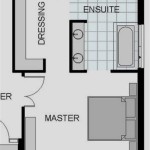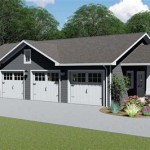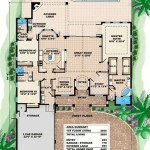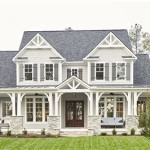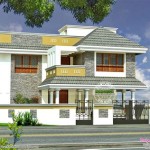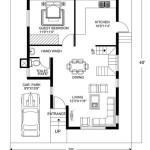Wrap Around Porch House Plans: A Southern Living Staple
Wrap around porch house plans evoke a sense of Southern charm and hospitality, deeply rooted in the traditions of leisurely afternoons and welcoming gatherings. Embodying comfort, functionality, and aesthetic appeal, these designs have solidified their place as a quintessential element of Southern Living architecture. The architectural style is not merely a façade, but a deliberate design choice that addresses regional climate, promotes social interaction, and contributes significantly to the overall livability of a home.
Southern Living, a publication synonymous with Southern culture and lifestyle, has long championed wrap around porch designs, showcasing a diverse range of styles that cater to varying needs and preferences. From modest cottages to grand plantation-style homes, the wrap around porch serves as a unifying element, seamlessly blending outdoor and indoor living spaces. This article explores the defining characteristics of wrap around porch house plans, their historical significance, the practical advantages they offer, and the key considerations when selecting a suitable design.
The Historical Roots of the Wrap Around Porch
The origins of the wrap around porch in the Southern United States can be traced back to the early 19th century. While influences from other architectural styles played a role, the Southern climate and the region's social customs were the primary driving forces behind its development. Before the widespread adoption of air conditioning, Southern summers were notoriously hot and humid. The wrap around porch provided a shaded outdoor space that allowed residents to enjoy the fresh air and escape the oppressive heat indoors. The extended roof overhang offered protection from the sun and rain, making the porch a usable space throughout much of the year.
Socially, the wrap around porch served as a transitional space between the private realm of the house and the public world outside. It became a place for neighbors to gather, families to relax, and children to play. The porch facilitated social interaction and strengthened community bonds. The design allowed for easy observation of street activity and provided a welcoming gesture to passersby. This integration of public and private space was particularly important in Southern culture, where hospitality and community were highly valued.
Over time, the wrap around porch became associated with Southern identity. It appeared in various architectural styles, from Greek Revival to Victorian, adapting to regional aesthetics and evolving with changing lifestyles. Its enduring popularity is a testament to its practicality and its symbolic significance as a representation of Southern hospitality and relaxation.
The Practical Benefits of a Wrap Around Porch
Beyond its aesthetic appeal and historical significance, the wrap around porch offers a multitude of practical benefits that contribute to the comfort and functionality of a home. These advantages extend beyond mere curb appeal, directly impacting the livability and energy efficiency of the dwelling.
One of the primary advantages is climate control. The extended roof overhang of the porch provides shade to the exterior walls of the house, reducing solar heat gain and lowering cooling costs during the hot summer months. This is particularly important in the Southern United States, where summers are often long and intense. The shade also protects exterior finishes from the damaging effects of the sun, extending the lifespan of siding, paint, and other materials.
The wrap around porch provides an extended outdoor living space that can be used for a variety of purposes. It can serve as an outdoor dining area, a relaxing lounge space, or a place for entertaining guests. The porch allows residents to enjoy the outdoors without being exposed to the elements, providing a comfortable and versatile space for relaxation and recreation. This expanded living area is particularly valuable for families with children, providing a safe and supervised space for outdoor play.
Furthermore, a wrap around porch adds value to a home. It increases the usable square footage of the property and enhances its overall appeal. Homes with wrap around porches tend to command higher prices in the real estate market, reflecting the desirability of this architectural feature. The porch also provides a sense of privacy and separation from the street, enhancing the security and tranquility of the home.
In terms of maintenance, a well-designed wrap around porch can also contribute to the longevity of the house's foundation. By diverting rainwater away from the foundation, the porch helps to prevent water damage and erosion, reducing the risk of costly repairs in the long run.
Key Considerations When Choosing a Wrap Around Porch House Plan
Selecting a wrap around porch house plan requires careful consideration of various factors, including site orientation, architectural style, material choices, and budget constraints. A well-planned porch should seamlessly integrate with the overall design of the house and complement the surrounding landscape.
Site orientation is a crucial factor in determining the placement and design of the porch. The porch should be oriented to maximize shade during the hottest part of the day and to take advantage of prevailing breezes. In the Southern United States, it is often advantageous to orient the porch towards the south or west to provide optimal shade during the afternoon hours. The orientation should also take into account the views from the porch, ensuring that it offers pleasant vistas of the surrounding landscape.
The architectural style of the house should be consistent with the design of the porch. A wrap around porch can be incorporated into a variety of architectural styles, from traditional Southern styles to more contemporary designs. However, it is important to ensure that the materials, details, and proportions of the porch complement the overall aesthetic of the house. For example, a Victorian-style house would typically feature ornate railings, decorative columns, and intricate trim work on the porch, while a more modern house might opt for simpler lines, minimalist details, and contemporary materials.
Material choices are also important considerations. The materials used for the porch flooring, railings, columns, and roof should be durable, weather-resistant, and aesthetically pleasing. Common materials for porch flooring include wood, composite decking, and concrete. Railings can be made of wood, metal, or composite materials. Columns can be constructed of wood, brick, or concrete. The roof can be covered with shingles, metal, or other roofing materials. The choice of materials should be based on factors such as cost, maintenance requirements, and aesthetic preferences.
Budget is always a key consideration in any construction project. The cost of building a wrap around porch can vary depending on the size, complexity, and materials used. It is important to establish a realistic budget and to obtain multiple bids from qualified contractors before starting construction. Reducing the size of the porch or selecting less expensive materials can help to lower the overall cost. However, it is important to avoid compromising on quality or safety in order to save money.
Accessibility is another important factor to consider. The porch should be easily accessible from both the interior of the house and the surrounding yard. Ramps or gently sloping walkways can be used to provide access for people with mobility impairments. The porch should also be well-lit to ensure safety at night.
Local building codes and regulations should also be taken into account. Before starting construction, it is important to obtain all necessary permits and to ensure that the porch complies with all applicable building codes. These codes may address issues such as structural integrity, fire safety, and accessibility.
Finally, consider the long-term maintenance requirements of the porch. Some materials, such as wood, may require regular painting or staining to protect them from the elements. Other materials, such as composite decking, may require less maintenance. Choosing low-maintenance materials can help to reduce the long-term costs of owning a wrap around porch.
By carefully considering these factors, homeowners can select a wrap around porch house plan that meets their needs, complements their lifestyle, and enhances the overall value of their property. The result will be a beautiful and functional outdoor space that can be enjoyed for years to come.
:max_bytes(150000):strip_icc()/HOH_SL1254-d5dcd603b4e042e7852fbb2e93f2e0a5.jpg?strip=all)
13 House Plans With Wrap Around Porches
:max_bytes(150000):strip_icc()/southern-living-house-plans-porch-18324aaa8f98476dbfab68520914c229.jpeg?strip=all)
These Southern Living House Plans Have Dreamy Porches

Southern Living Dreamy House Plans With Front Porches Blog Dreamhomesource Com
:max_bytes(150000):strip_icc()/HOH_SL1482-df5abe9d7ee44f7a9f29e0a7b412b06c.jpg?strip=all)
13 House Plans With Wrap Around Porches
:max_bytes(150000):strip_icc()/RX_1909_SL1821-dd6f62380f214b4fb1e6ebd310c4d535.jpg?strip=all)
13 House Plans With Wrap Around Porches
:max_bytes(150000):strip_icc()/southern-living-porch-3-0ead260685624d238807be4678b1808f.jpeg?strip=all)
These Southern Living House Plans Have Dreamy Porches
:max_bytes(150000):strip_icc()/SL-2028_legacy-ranch-6427ec9dfafa4a6aa10a01e65bef0cea.jpg?strip=all)
30 Pretty House Plans With Porches
:max_bytes(150000):strip_icc()/fcp_1131-6d1ee16d664949f08815b69d4a5bdbe3.jpg?strip=all)
13 House Plans With Wrap Around Porches
:max_bytes(150000):strip_icc()/carolina-5fd2d7bbeb074b93bf46a033e0c030f7.jpg?strip=all)
30 Pretty House Plans With Porches
:max_bytes(150000):strip_icc()/summertime-bungalow-f33e7a654fa74a648297c0ca87a5a03f.jpg?strip=all)
30 Pretty House Plans With Porches

